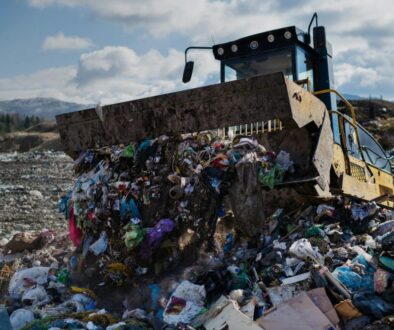California farmland doused with 2.5 million pounds of PFAS pesticides each year, analysis finds
Listen to the audio version of this article (generated by AI).
Farm fields in California, the largest US agricultural state, are sprayed each year with an average of 2.5 million pounds of pesticides containing toxic PFAS, potentially exposing millions of people to the chemicals through contaminated food, soil and drinking water, according to a new analysis of state regulatory data.
The findings in California show “how widely the potentially toxic PFAS pesticides are used on agricultural land,” Jared Hayes, a senior policy analyst for the Environmental Working Group (EWG) and co-author of the report, said in a statement. “It doesn’t make sense when plenty of non-PFAS pesticides are readily available.”
EWG’s analysis, published November 18, found that pesticides containing PFAS as active ingredients are most heavily used on land where farmers grow almonds, pistachios, wine grapes, alfalfa and tomatoes, among others.
The group developed a map showing that 52 PFAS-containing pesticides approved by the US Environmental Protection Agency (EPA) were sprayed in 58 counties across California from 2018 to 2023, with Fresno, Kern and San Joaquin counties most heavily doused with PFAS pesticides. The analysis cites data collected by the California Department of Pesticide Regulation.
Sixty-seven per- and polyfluoroalkyl substances (PFAS) are federally approved as active ingredients in pesticides even though the class of humanmade chemicals don’t easily break down in the environment and have been linked to various health problems.
Aside from being added to pesticides as active ingredients, PFAS may be included as inert, non-active ingredients, which pesticide makers are not required to disclose on labels and can be considered “trade secrets.” PFAS can also unintentionally contaminate pesticides when they leach into them from fluorinated plastic containers.
The vast of PFAS pesticides in California were used for crop production, with 15% used for other practices such as controlling termites or maintaining landscapes, according to the analysis.
Among the most frequently applied pesticides, according to the EWG report, were the herbicide oxyfluorfen, the insecticide bifenthrin, the herbicide trifluralin, the insecticide lambda-cyhalothrin and the fungicide penthiopyrad.
The new analysis builds on a 2024 study that found PFAS are increasingly being added to pesticides applied in homes and crops across the country. PFAS account for 14% of all active ingredients in pesticides used in the US, including almost one-third of active ingredients approved in the last decade, according to the study.
On Nov. 5, the EPA approved the PFAS pesticide cyclobutrifluram for use in growing turf, ornamental plants and romaine lettuce, as well as for cotton and soybean seed.
“No human health risks of concern were identified when this pesticide is used according to the label,” the agency said in a statement, adding that the agency has put measures in place to prevent the pesticide from harming endangered species. The agrichemical company Syngenta, which developed the pesticide, has touted it as a way to promote “sustainability.”
Since President Trump took office, the EPA has proposed approving five new PFAS pesticides, including, on Nov. 4, the pesticide epyrifenacil for use on canola, corn, soybeans and wheat. Epyrifenacil has been found to break down into trifluoroacetic acid (TFA), which may be one of the most widespread “forever chemicals.”
Epyrifenacil is known to break down into a smaller forever chemical called trifluoroacetic acid (TFA), which is thought to be one of the most pervasive PFAS water contaminants in the world. TFA comes from many sources in the environment, but recent research has highlighted the significant role pesticides play in water contamination throughout the world.
Scientists are increasingly sounding the alarm about the use of PFAS in pesticides sprayed on US farmland, saying they can harm both humans and wildlife, with some suspecting PFAS pesticides contribute to infections in fish when they wind up in waterways.
In 2024, the Center for Food Safety and other nonprofits delivered a petition to the EPA asking the agency to ban PFAS in pesticides, writing that “EPA’s actions and inactions have led to ongoing PFAS contamination and public health impacts.”
Two of the most frequently applied pesticides in California identified in the analysis, bifenthrin and trifluralin, are no longer permitted for use in the European Union. However, a proposed universal ban on PFAS in the European excludes PFAS pesticides, with groups such as the Pesticide Action Network pushing for tighter restrictions.
Featured image: Linda Pomerantz Zhang via Unsplash.




